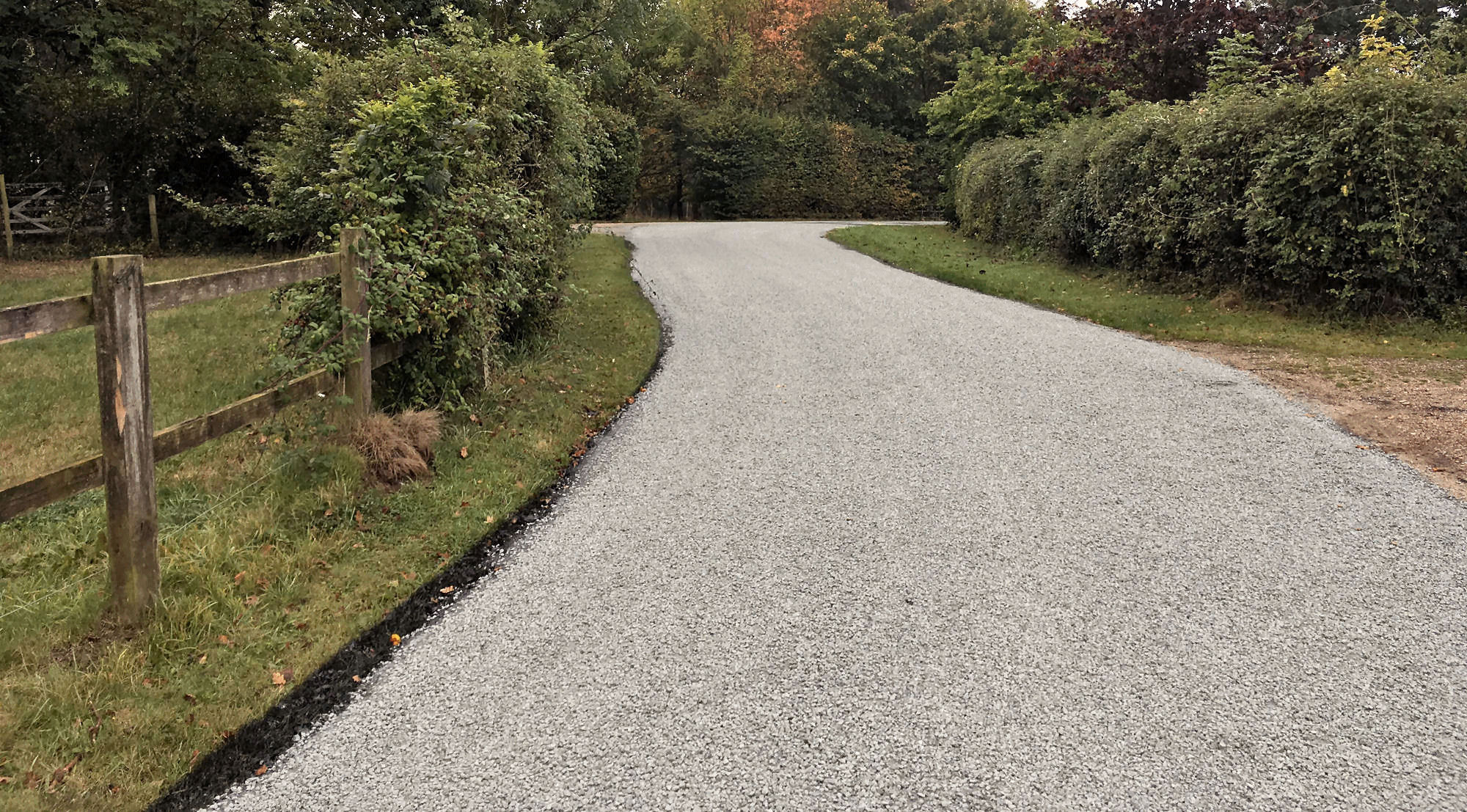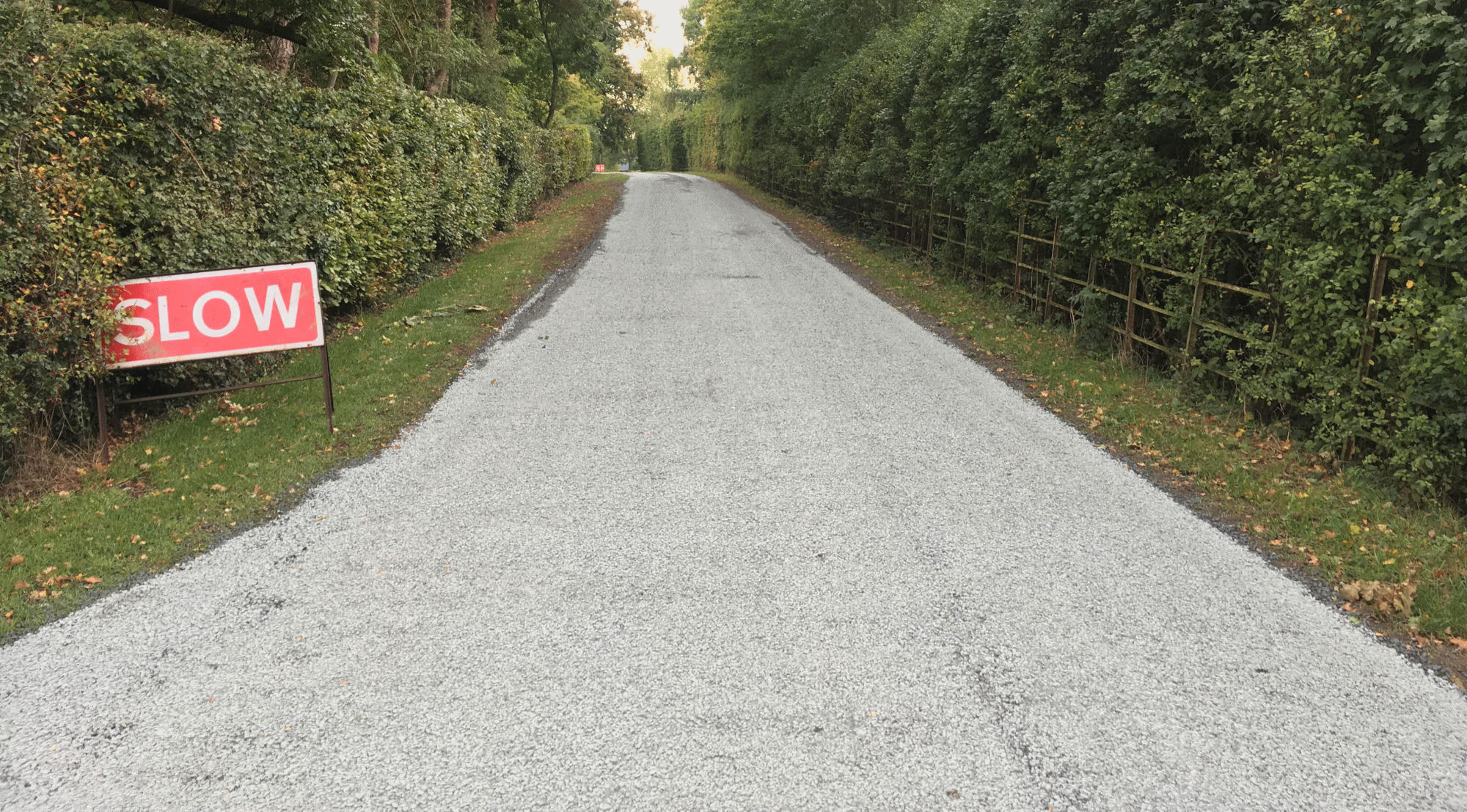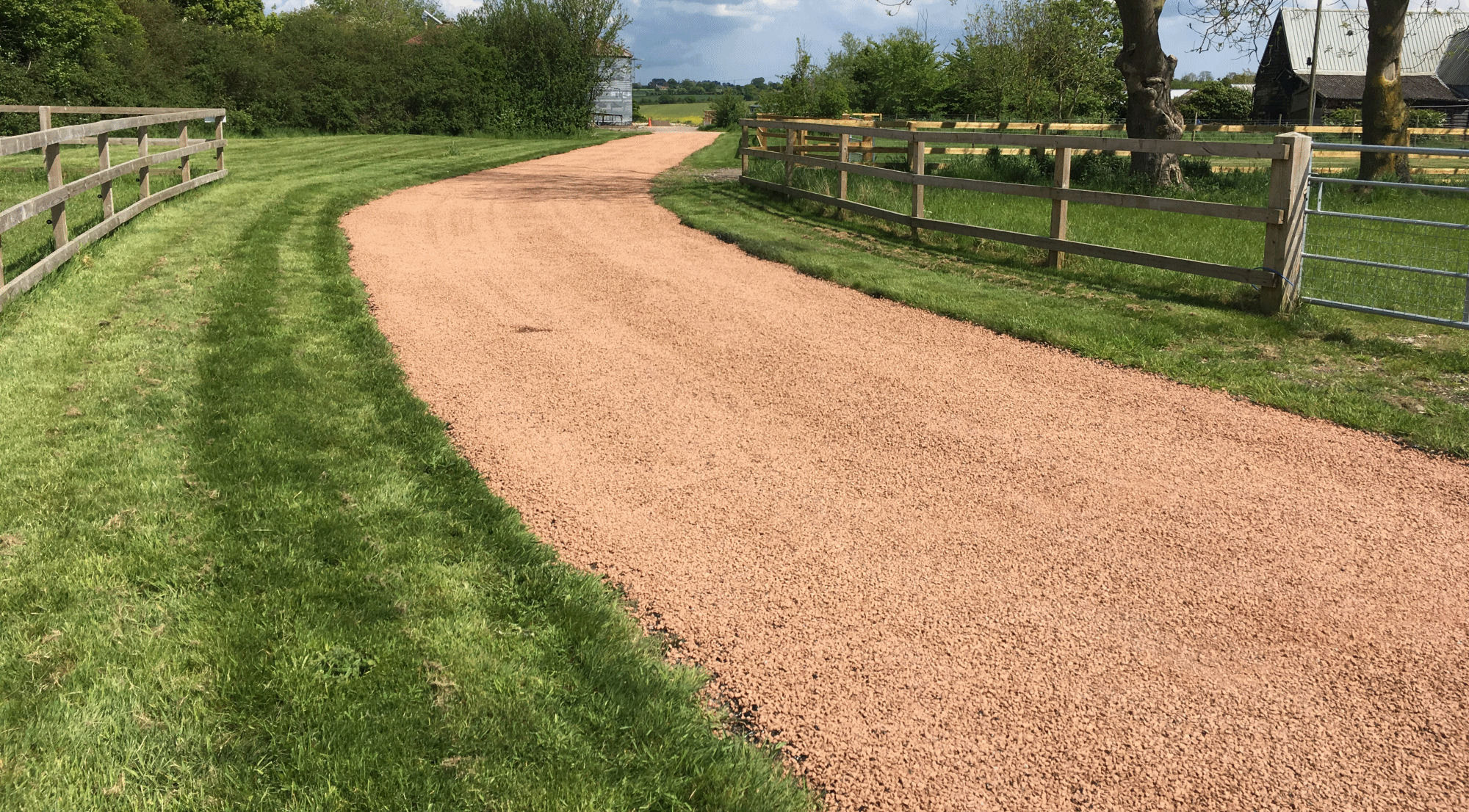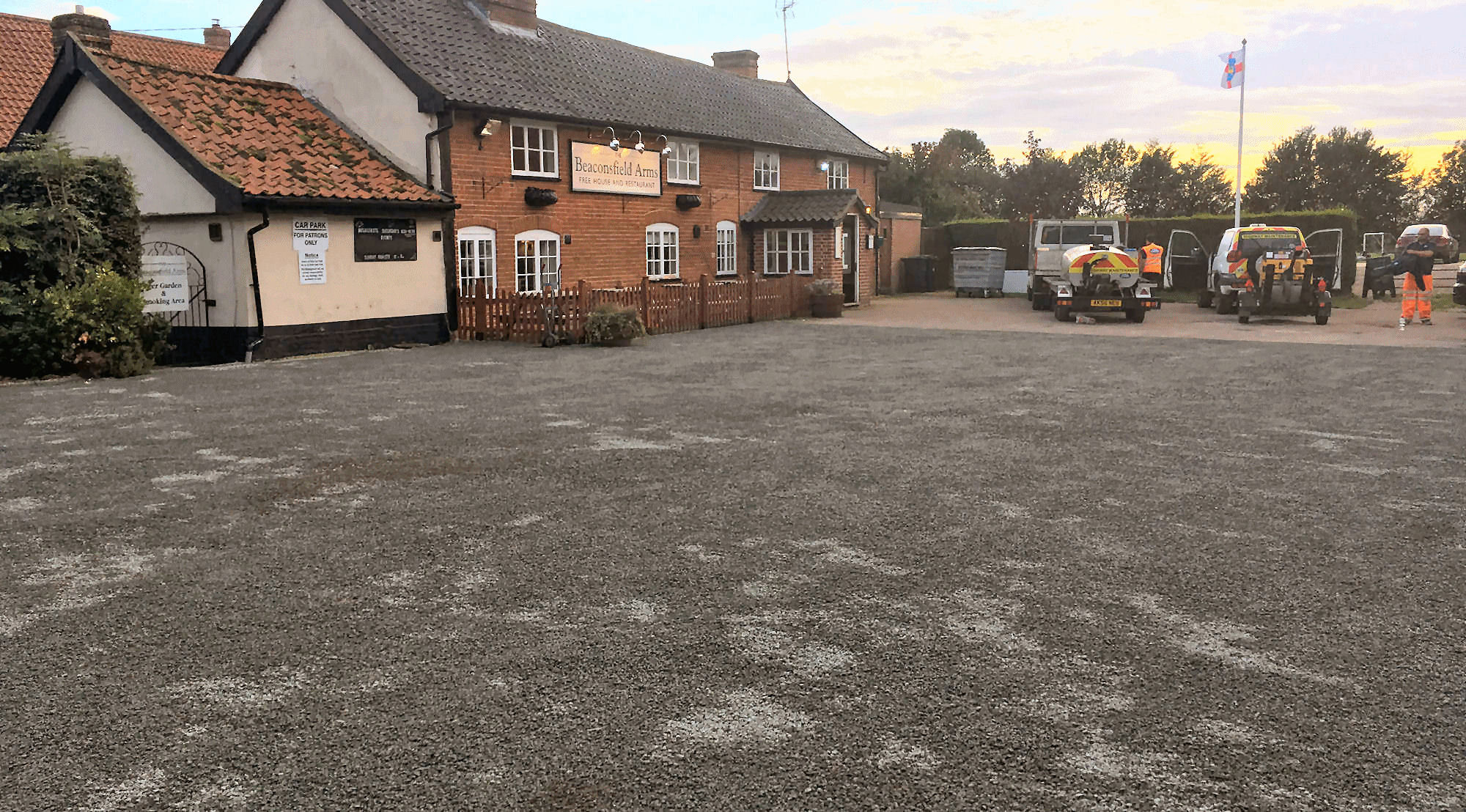Surface dressing or tar and chippings is a very cost effective method of road surfacing, it's benefits include protection against frost and water damage binds loose surfaces and prevents damage to existing road surfaces.
There are a number of names for this product which includes tar and stone, tar and gravel, tar and chip, tar and shingle, tar and granite and surface dress, this product also comes in a lot of different colours.
Types of bitumen binder:
c67b2 formally known as k170 is a hot applied surface dressing emulsion used for low traffic areas eg. footpaths, traffic Islands and decorative areas etc.
Polymodifed binder is a hot applied surface dressing binder reinforced with polymer fibers and is used for high traffic areas such as b roads, carparks, farm roads and driveways etc.
Some recent surface dressing jobs:
- Car parks
- Farm roads
- Estate roads
- Holiday and leisure parks
- Driveways
- Paths
- Forecourts
No need to excavate
surface dressing can also rejuvenate old tarmac and concrete driveways with out the need to excavate the old surface.
Old tired broken surfaces can then be hidden beneath the surface dressing saving the cost of removing and disposing of the old surface.
How is surface dressing carried out?
The surface is initially swept clean next all adjacent areas including kerbs and brickwork etc are masked using pvc tape to avoid spray drift. Then the surface is sprayed with hot bitumen binder before a layer of chippings typically 6-14 mm in size are rolled into the binder. On completion all tape is removed and the site left clean and tidy.







